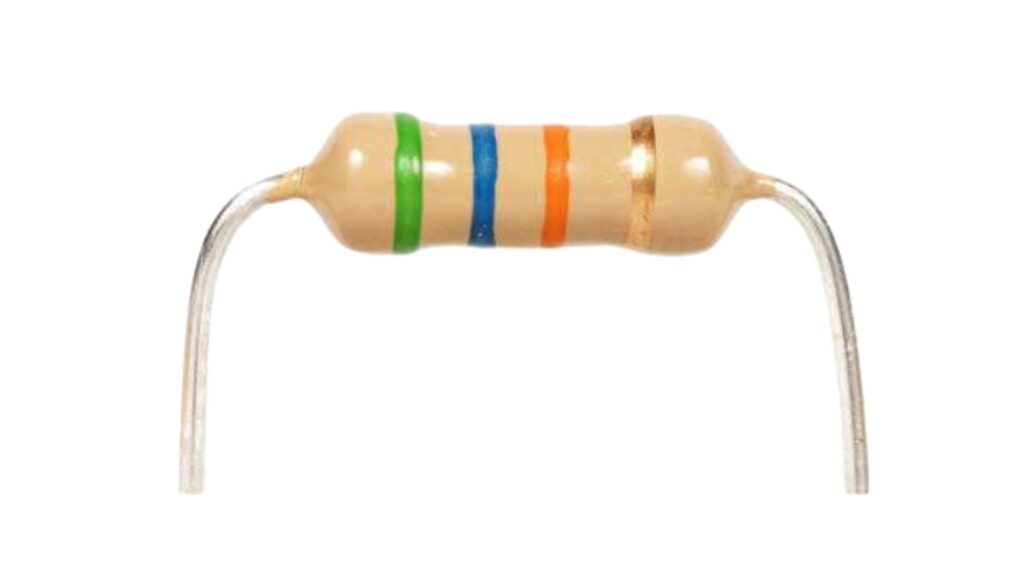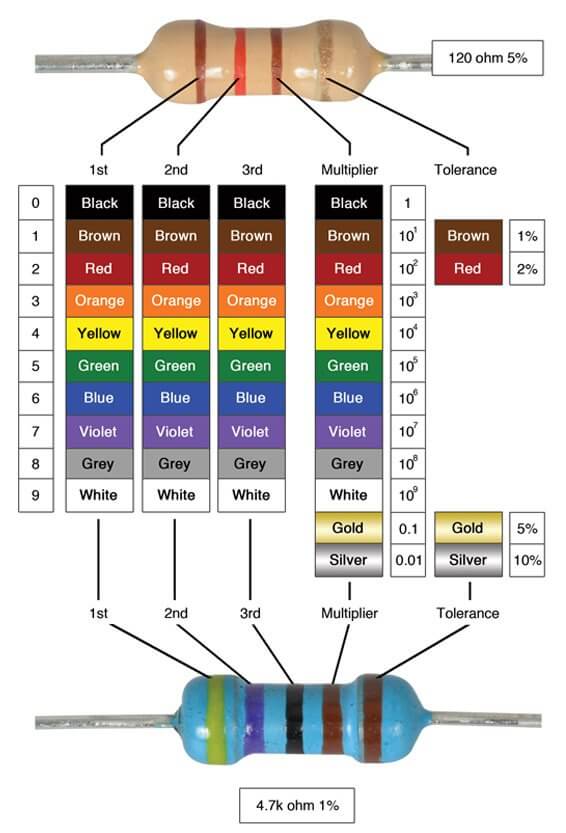Introduction
If you’re new to electronics and wondering what a resistor does, this beginner-friendly guide is for you. A resistor is one of the most fundamental components in any electronic circuit, used to control the flow of electrical current.
In this resistor guide, you’ll learn the basics of how resistors work, their main functions, and why they’re essential in building safe and functional circuits. Whether you’re a hobbyist or a student, this article simplifies the functions of resistors in a clear and easy-to-understand way.
Need help identifying resistor values? Check out our Resistor Color Code Calculator for quick and accurate decoding.
What is a Resistor?

A resistor is an electronic component that reduces or controls the flow of electrical current in a circuit. Its main purpose is to limit current, divide voltage, and protect other components from receiving too much power.
In simple terms, resistors act like traffic regulators for electricity, ensuring that each part of your circuit gets just the right amount of current. This is why they’re one of the first things you learn in any resistor guide or electronics basics tutorial.
Resistors come with specific values of resistance (measured in ohms, Ω), which determine how much they restrict current. These values are often marked using colored bands on the resistor’s body.
How Do Resistors Work?
Resistors work by opposing the flow of electric current in a circuit. When current passes through a resistor, it encounters resistance, which slows it down and reduces the amount of electrical energy reaching the next component.
This resistance is measured in ohms (Ω) and helps regulate how much current flows and how much voltage is dropped across the resistor. The higher the resistance, the less current flows.
In practical use, resistors:
- Protect sensitive components like LEDs by limiting current
- Control voltage levels in parts of the circuit
- Divide voltage between multiple components
- Help set timing in circuits using capacitors and resistors together
So, the function of a resistor isn’t to stop electricity entirely — it’s to manage and balance the flow so that your circuit works safely and efficiently.
Types of Resistors
Resistors come in various types, each designed for specific functions and environments. Here’s a breakdown of the main types of resistors commonly used in electronics:
| Resistor Type | Description | Common Use |
|---|---|---|
| Fixed Resistor | Has a single, unchanging resistance value. | Used in most basic electronic circuits. |
| Variable Resistor (Potentiometer) | Allows manual adjustment of resistance. | Volume controls, tuning circuits. |
| Thermistor | Resistance changes with temperature. | Temperature sensors, circuit protection. |
| LDR (Light Dependent Resistor) | Resistance varies with light intensity. | Light sensors, automatic lighting systems. |
| Wire-Wound Resistor | Made by winding a metal wire, offers precise resistance and high power handling. | Power supplies, industrial equipment. |
| Carbon Film Resistor | Made with a carbon film on a ceramic base, low cost and reliable. | General-purpose electronics. |
| Metal Film Resistor | Offers better accuracy and temperature stability than carbon types. | Audio equipment, precision circuits. |
How to Read Resistor Codes
Below is the self-explanatory image. You can calculate the resistance of the resistor using this formula:

To learn how to read these codes, visit our guide on Resistor Color Coding: The Beginner’s Guide.
Applications of Resistors
| Application Area | How Resistors Are Used |
|---|---|
| Voltage Regulation | Used to drop voltage levels in circuits, ensuring other components receive safe voltages. |
| Current Limiting | Protects LEDs, transistors, and ICs by restricting excessive current flow. |
| Voltage Divider Circuits | Used in combination to divide input voltage into smaller, usable values. |
| Timing Circuits | Paired with capacitors in RC (Resistor-Capacitor) circuits to manage timing delays. |
| Signal Conditioning | Shapes, filters, or controls electronic signals in analog and digital systems. |
| Heat Generation (Load) | Acts as a dummy load or heatsink by converting electrical energy into heat. |
| Biasing of Transistors | Helps set the correct operating point for transistors in amplifier circuits. |
| Pull-up / Pull-down | Keeps inputs at a known voltage level when no active signal is present. |
Common Mistakes When Using Resistors
Avoid these pitfalls:
Improper Placement: Incorrect positioning within the circuit can affect performance.
Incorrect Value Selection: Using a resistor with an inappropriate resistance can lead to circuit malfunction.
Ignoring Power Ratings: Exceeding the power rating can cause the resistor to overheat and fail.
When working with resistors, especially in complex circuits, always double-check your resistance values using a resistor color code chart or a multimeter. To simplify this further, you can use an online Resistor Value Calculator . It saves time and minimizes errors, ensuring your circuit functions perfectly without the guesswork!
Conclusion
Resistors may seem simple, but they play a critical role in controlling and protecting your electronic circuits. By understanding the functions of resistors, their basic types, and how to read their values, you build a strong foundation for working with more complex electronic components. Whether you’re assembling your first circuit or diving deeper into electronics, mastering resistor basics is a must.
For further reading, explore our Introduction to Electronic Components: Beginners Guide.